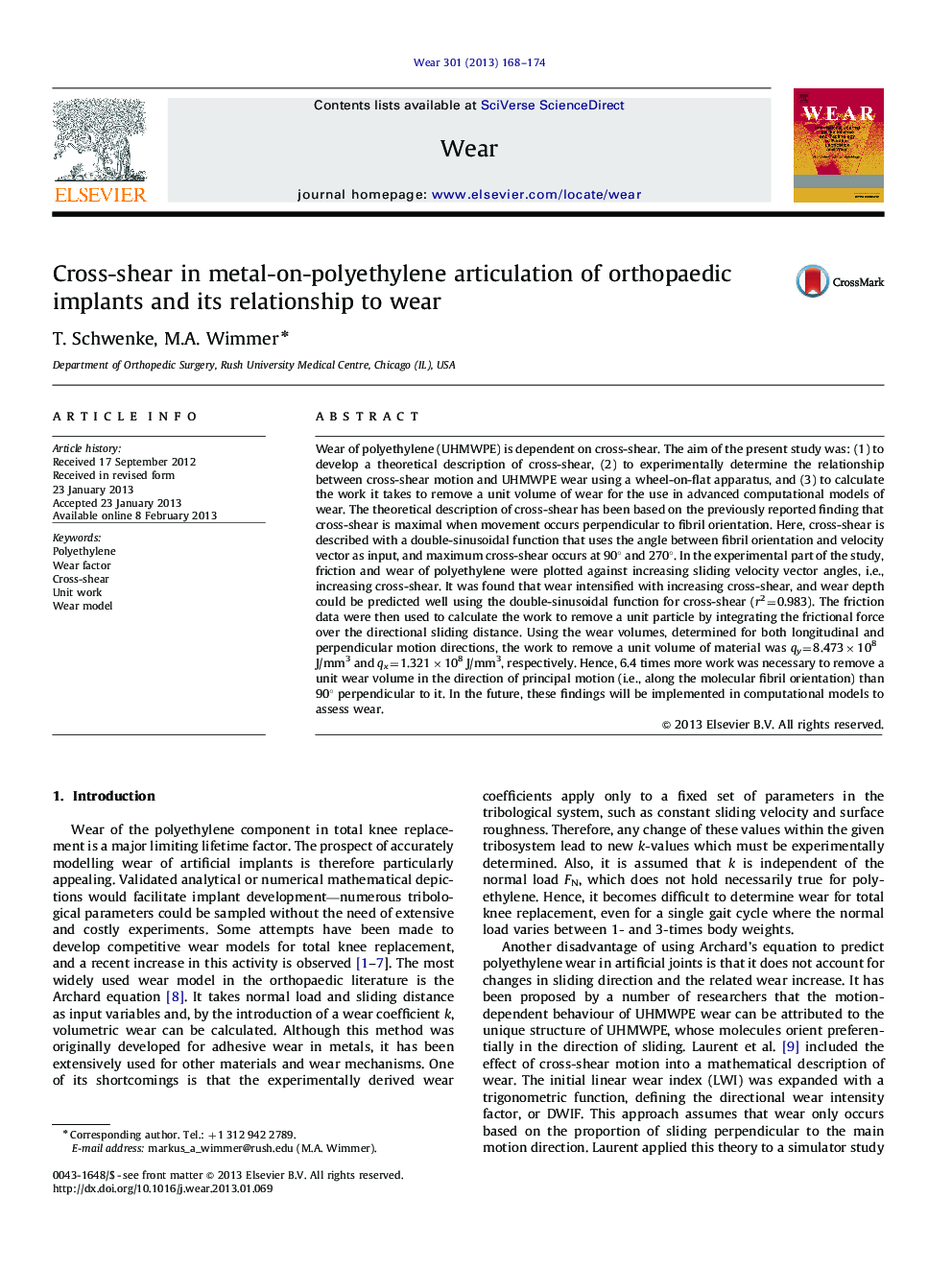| کد مقاله | کد نشریه | سال انتشار | مقاله انگلیسی | نسخه تمام متن |
|---|---|---|---|---|
| 617518 | 1455001 | 2013 | 7 صفحه PDF | دانلود رایگان |

Wear of polyethylene (UHMWPE) is dependent on cross-shear. The aim of the present study was: (1) to develop a theoretical description of cross-shear, (2) to experimentally determine the relationship between cross-shear motion and UHMWPE wear using a wheel-on-flat apparatus, and (3) to calculate the work it takes to remove a unit volume of wear for the use in advanced computational models of wear. The theoretical description of cross-shear has been based on the previously reported finding that cross-shear is maximal when movement occurs perpendicular to fibril orientation. Here, cross-shear is described with a double-sinusoidal function that uses the angle between fibril orientation and velocity vector as input, and maximum cross-shear occurs at 90° and 270°. In the experimental part of the study, friction and wear of polyethylene were plotted against increasing sliding velocity vector angles, i.e., increasing cross-shear. It was found that wear intensified with increasing cross-shear, and wear depth could be predicted well using the double-sinusoidal function for cross-shear (r2=0.983). The friction data were then used to calculate the work to remove a unit particle by integrating the frictional force over the directional sliding distance. Using the wear volumes, determined for both longitudinal and perpendicular motion directions, the work to remove a unit volume of material was qy=8.473×108 J/mm3 and qx=1.321×108 J/mm3, respectively. Hence, 6.4 times more work was necessary to remove a unit wear volume in the direction of principal motion (i.e., along the molecular fibril orientation) than 90° perpendicular to it. In the future, these findings will be implemented in computational models to assess wear.
Journal: Wear - Volume 301, Issues 1–2, April–May 2013, Pages 168–174